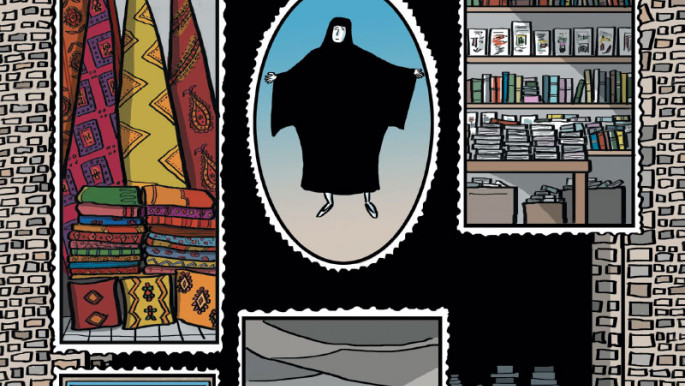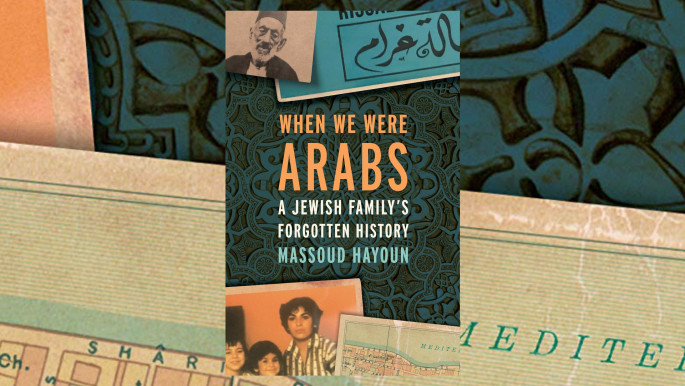The Wolf of Baghdad: Memoir of a Lost Homeland
In the 1940s a third of Baghdad's population was Jewish. Within a decade nearly all 150,000 had either fled or been expelled. Isaacs's debut graphic novel traces the story of her relatives who lost both their country and home, exploring the author's link to her ancestral past.
Jewish-Arab at home, British outside, Isaacs longed for a country forever present in her family's food and language, but one she was always absent from.
"The Finns have a word, kaukokaipuu, which means a feeling of homesickness for a place you've never been to. I've been living in two places all my life; the England I was born in, and the lost world of my Iraqi-Jewish family's roots."
It is through her family's memories, photographs and tales of the 1930s that Isaacs goes to Baghdad for the first time, drawing the audience in as she embarks on a journey to discover her heritage.
The Wolf of Baghdad is a celebration of the author's prodigious talents as well as her Iraqi-Jewish heritage. Isaacs is a successful musician and also a renowned cartoonist known as The Surreal McCoy.
Her remarkable talents allow the audience to access her heritage in different ways. Although the memoir is primarily a graphic novel it could more aptly be described as an audiovisual story, with musical references imbued as a significant part of Isaacs's identity.
 |
I've been living in two places all my life; the England I was born in, and the lost world of my Iraqi-Jewish family's roots |  |
The novel opens with a splash page of Iraqi musical notes dancing in the air around present-day London. These illustrations offer a unique experience of her story as the melodies take life in a motion comic, described by the author as "reading a book on screen […] accompanied by music."
 |
|
And while one can watch the pages turn accompanied by a Judeo-Arabic musical background, the viewer can also travel back in time to Baghdad solely through music.
The Wolf of Baghdad's soundtrack performed by 3yin, a Judeo-Arabic London-based band, is another opportunity for the audience to immerse itself in Isaacs's family history and be transported to Iraq.
The myriad ways in which the story is rendered indicate the author's attachment to her heritage - one that appears rooted in homesickness. The Wolf of Baghdad is an attempt to enhance the journey back to Baghdad, a work that celebrates Iraqi-Jewish culture and history.
Isaacs shares her knowledge about Baghdad through short statements and anecdotes from her relatives, which are illustrated. These anecdotes are the only text ever presented as the story of her family unfolds.
Combined with photos and documents such as passports and ID cards she dives into her roots. As a character she doesn't have the floor, she is only on the receiving end.
She listens to her relatives' accounts of their life in Baghdad and lets her subconscious take the lead as she falls into a deep sleep. The music is ever changing, adapting itself to the atmosphere of Baghdad. It expresses happiness, joy, and soothing moments but also conveys moments of rising tension and fear.
Isaacs becomes an integral part of the Jewish Quarter of Baghdad; wearing the black abaya her grandmother wore, visiting her parents' house, wandering in the kitchen, experiencing the sunrise and even taking a walk in the narrow alleys of Baghdad's streets - all under the protection of the Dheeb.
 |
Once known as 'The City of Peace', Baghdad is depicted in all its glory, a lively city thriving with a diverse population of Jews, Muslims and Christians |
 |
The wolf is a mythical character which Baghdadi Jews believe protects them from the evil eye and other spirits. It is portrayed as omnipresent in the background, passive but always looking out for Carol and Baghdadi Jews, following them all the way to London.
 |
|
| Read more from TNA's Book Club: When We Were Arabs: A Jewish Family's Forgotten History |
Once known as 'The City of Peace', Baghdad is depicted in all its glory, a lively city thriving with a diverse population of Jews, Muslims and Christians.
An anecdote from David Isaacs recalls: "After the Turkish Revolution [in 1908] everything was alright for the Jews. A new governor was sent to Iraq, and he made the place so safe that people started going out at night. Jewish women went out, well dressed even with the helgun [jewellery]. That period was really very good for the Jews in Iraq, in fact some of the Muslims said, 'They are in our protection, so we must look after them'".
The changing atmosphere of the city is shown through the use of a light background in the first half of the book, describing a lively and peaceful city. The second half is framed within a darker, sometimes pitch-black background to reflect the fear and insecurity Baghdadi Jews lived in.
The consequences of the rise of Nazism and the fear of Zionism weighed heavily on the Jewish population of Baghdad and Iraq. It took only a few years for a population that had inhabited present-day Iraq for more than 2,000 years to decline. "By the early 1950s the majority of the Jewish population had gone," says Nessim Hay, Isaacs's uncle.
The Wolf of Baghdad is an important addition to Arab and Jewish literature. It tells the story of Jewish Iraqis through the perspective of the community who lived there, a narrative that is all the more crucial.
The graphic novel remembers Baghdad not with words, but rather through images and music which open the door to an important part of Iraq's past, even if some of the essential historical context of political and social events are only briefly examined.
Assia Belgacem is a French-Algerian book reviewer with a focus on Muslim and Arab literature
Follow her on Instagram: @shereadsox
The New Arab Book Club: Click on our Special Contents tab to read more book reviews and interviews with authors:
 |
|





 Follow the Middle East's top stories in English at The New Arab on Google News
Follow the Middle East's top stories in English at The New Arab on Google News


